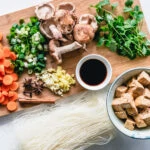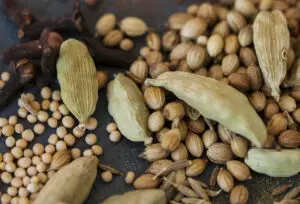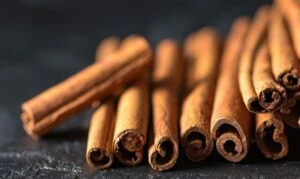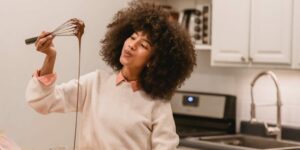There are dozens of different kinds of cookware out there, and one of the best in the lineup is the ever-trusty saucepan! These bad boys are useful for more than just sauces. They are more versatile than you think, which is why they are often considered essentials in professional kitchens and can be used as a frying pan saute pan in a pinch.
Your home kitchen can benefit from the addition of this pan, too! You’ll be pleasantly delighted by all of the amazing things these pans can do. Let’s explore exactly what a sauce pan is and what makes them so special. By the end of this article, you’ll be a saucepan expert!
What is a Saucepan?
A sauce pan is a form of cookware defined by its circular shape, high sides all around, and having a single, long handle. There are many options for saucepan material. You’ll find aluminum, cast iron, and stainless steel saucepan varieties. But regardless of the material, it’s the shape and design that make it so great at what it’s meant to do: making sauces!
Thanks to the tall sides on a saucepan, you can easily simmer and heat bubbly sauces without worrying about spatter and stains. (Who doesn’t love avoiding a mess and spending less time cleaning?) This also allows a saucepan, despite its smaller diameter, to be filled with more liquid than other, shallower pans. The heat travels up the base and around all sides of the saucepan to evenly cook what’s inside.
The single handle fixed to a saucepan is meant for easy handling. The handle is usually a material that does not heat up, so you can touch it with no fear. It is meant to provide you with good mobility, so you can quickly remove a pan from heat when needed during cooking. (Which is great as you need to control heat well when cooking some sauces.)
Saucepans will also often come with a tight-fitting lid to allow them to hold heat better. These pans can come in a wide range of sizes, fitting anywhere from ¾ QT to 7+QT of liquid! The size of the saucepan you use will depend on your cooking needs. Most home cooks stick with a standard 2 QT size saucepan.
What Can You Cook in a Saucepan?
As we keep touching on, there are a ton of things your saucepan can cook super well, thanks to its shape and design. These pans excel at cooking anything liquid that needs even heat. Here are some of the amazing things you can cook with your saucepan:
Different Kinds of Sauce
A saucepan is, obviously, amazing at cooking sauce! They’ve been designed to cook sauces up perfectly, which is one of the reasons you frequently find them in kitchens, where sauce-making happens on the regular.
When using a saucepan at home, you can very easily heat something storebought or make a homemade red sauce for spaghetti night with ease. Thanks to the high walls, you can do this without making a total mess of your stovetop.
You can also use a saucepan as an excuse to teach yourself the 5 mother sauces, so you can become a sauce expert. Once you have the 5 mother sauces as a part of your cooking repertoire, you have a whole world of recipes to explore.
The five mother sauces include a bechamel, veloute, espagnole, hollandaise, and tomato sauce. All of these can be created using a saucepan and are a staple in French cooking. Consider adding these sauces to your regular cooking rotation to change things up!
Homemade Jam
Have you ever made homemade jam? Though sealing jam to safely preserve it can require special equipment, making the jam is easy with a saucepan.
When making a fruit jam, you need to heat fruit, sugar, and other liquids in a pot and let it simmer. A saucepan can be the perfect tool for this, allowing you to cook the ingredients evenly without making a mess.
Next time you go strawberry or apple picking, consider saving some fruit for some jam! Jam-making can be a ton of fun, and they make great gifts for loved ones.
Soups and Stews
Liquids love saucepans for even heating and fast cooking. So why not make a saucepan your go-to cookware for soup?
A saucepan can hold more liquid than you think, making it perfect for cooking or heating soup. Plus, its ability to evenly heat liquids can get the job done with speed, so you can get to eating faster.
Small Portions of Boiled Vegetables
If you’re cooking for 1 to 2 people, a saucepan is a perfect size for some fast boiling. Next time you want some mashed potatoes, cut up a few and boil them in your saucepan. The lid cover can make boiling water faster and get your potatoes done quicker.
You can use a saucepan for boiling any vegetable. Carrots, broccoli, green beans, and more can be quickly boiled and served using a saucepot.
Pasta & Grains
If it’s pasta night at your house, get your saucepans ready. Saucepans aren’t only good for the delicious sauce that’s going to go on your pasta. They are great for boiling the pasta itself! Though most smaller sizes will only fit enough to feed 1 to 2 people, it’s still a handy tool to cook pasta fast.
You can also boil other kinds of grains in a saucepan, like lentils, risotto, or quinoa! If it needs boiling, this pan can do the trick.
Deep Frying Small Quantities
This one can be a bit temperamental, but in a pinch, a saucepan can be used to deep fry things while cooking. A saucepan isn’t huge, so we don’t recommend deep-frying your Thanksgiving turkey in one. However, it can do smaller items, like small doughnuts, chicken nuggets, and small portions of fries.
Because of its depth, a saucepan allows you to submerge small items in hot oil for deep frying. Plus, the high sides can keep some of the spatter and oil contained and help the oil maintain a consistent temperature.
Remember to take extreme caution when deep-frying any food. Always watch your pot, don’t fry too much at once, and keep a fire extinguisher nearby in case of an accident.
Saucepan Tips
If you’re planning on using a saucepan, keep the following tips in mind:
Watch Your Pan During Cooking
A saucepan can be a little temperamental when cooking with it. When heating any sauce or liquid, you need to watch things to ensure nothing scorches or overcooks.
It’s good to constantly stir anything in a saucepan, whether you’re cooking liquid or boiling something like pasta or vegetables. It’s easy for foods to settle at the bottom and burn or get stuck to the pan. These pans tend not to be nonstick, so you should constantly stir while cooking.
Watch the Corners While Cleaning
The shape of a saucepan can sometimes make cleaning a pain. Food and liquids tend to cling well to the inside curved edge on your pan. You need to take extra care to scrape and clean away excess food after cooking to prevent nasty bacteria from breeding.
Sizing is Limited
Saucepans tend to come in smaller sizes than other pots and pans. The smaller size makes it great at what it does, but it can frustrate those looking to cook large quantities.
In a restaurant environment, saucepans are ideal for prepping individual dishes that require different sauces. With a saucepan, you can prep and heat smaller, more individual portions fast.
However, if you’re looking to prepare enough tomato sauce to feed a cafeteria of people, a saucepan may be too small for your needs. In these instances, you can use a deeper stock or stew pot While they won’t have the same mobility as a saucepan, they will evenly heat any liquids you’re cooking.












